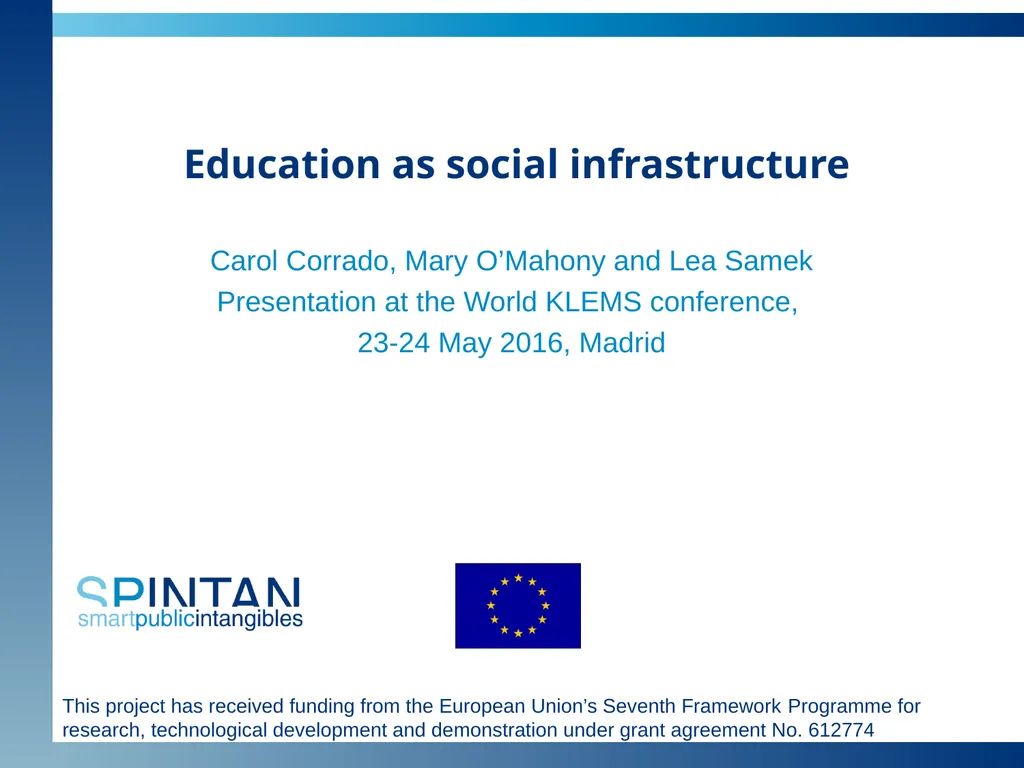
Author : liane-varnes | Published Date : 2025-05-12
Description: Education as social infrastructure Carol Corrado, Mary OMahony and Lea Samek Presentation at the World KLEMS conference, 23-24 May 2016, Madrid Starting point is Corrado, Haskel and Jona-Lasinio (2015) SPINTAN framework document ThisDownload Presentation The PPT/PDF document "" is the property of its rightful owner. Permission is granted to download and print the materials on this website for personal, non-commercial use only, and to display it on your personal computer provided you do not modify the materials and that you retain all copyright notices contained in the materials. By downloading content from our website, you accept the terms of this agreement.
Here is the link to download the presentation.
"Education as social infrastructure Carol Corrado,"The content belongs to its owner. You may download and print it for personal use, without modification, and keep all copyright notices. By downloading, you agree to these terms.













